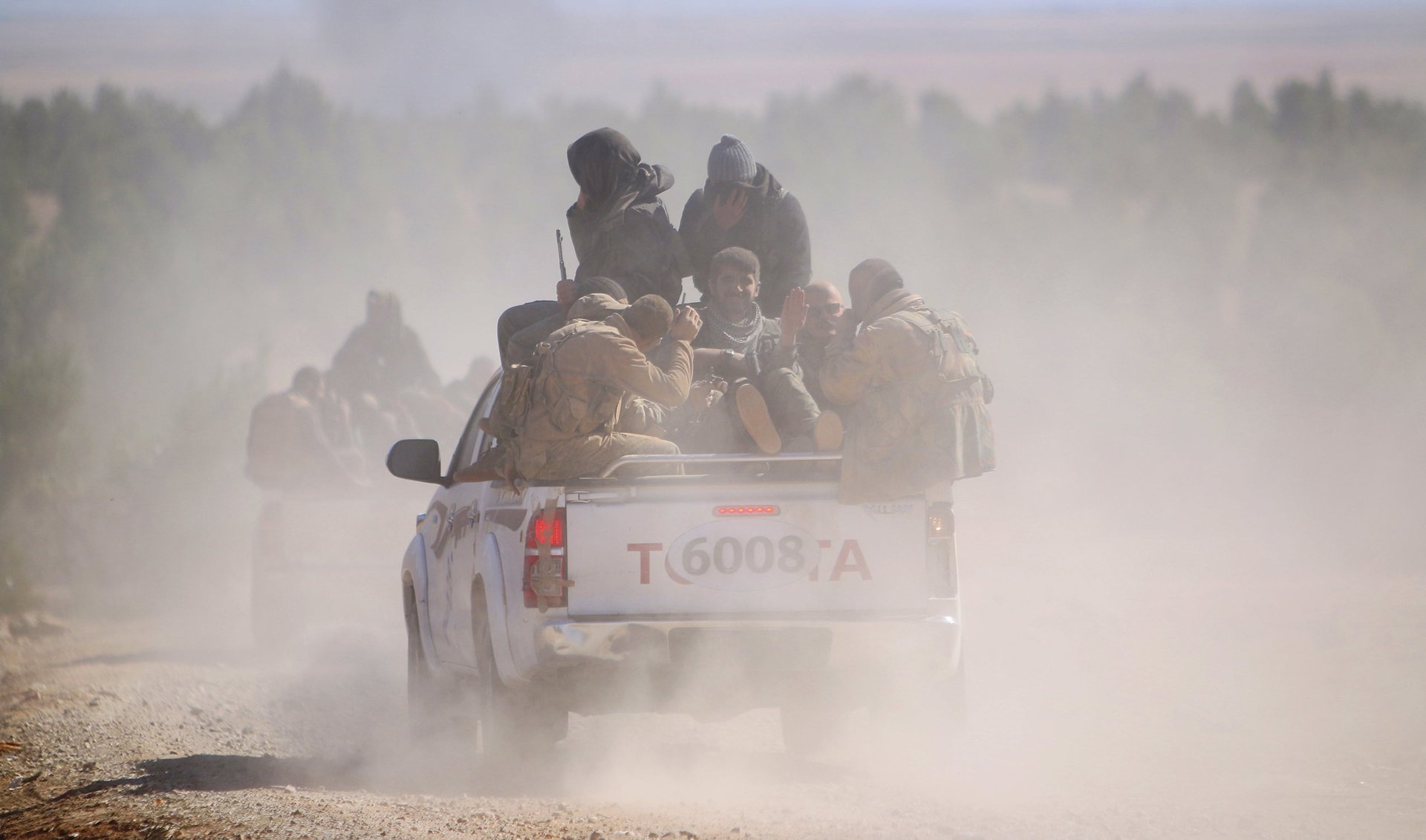Why does the US back two opposing rebel groups in Syria?
The US is operating two foreign policies in Syria, adding an extra level of complexity to the country’s precarious new ceasefire agreement.


The US is operating two foreign policies in Syria, adding an extra level of complexity to the country’s precarious new ceasefire agreement.
Even though they have a common enemy in the Assad regime and a common friend in the US government, Syrian and Kurdish rebels turned on each other earlier this month. Each is backed by a different US agency—the Free Syrian Army (FSA) receives support from the US Central Intelligence Agency, while the Kurdish Popular Defense Units (YPG and YPJ) receive support from the US Department of Defense.
Both groups tell Quartz they are committed to the nationwide ceasefire, which began Friday, Feb. 26. But tension over recent conflicts remains, and two parties that could have been allies in freeing Syria from its five year struggle have given in to suspicion and mistrust, at a key moment for negotiating peace.
The US government originally funded and equipped the YPG with hopes that it would extinguish Islamic extremist groups in Kurd-dominated areas. It did—but then the group turned its attention to the FSA-run suburbs of Aleppo, near the Turkish border.
A commander with Furqa al-Sultan Murad, an ethnic Turkmen brigade operating as part of the Free Syrian Army, told BuzzFeed News that his men have come under attack from Kurdish forces. Al-Sultan Murad receives weapons and support from the CIA.
“They are accusing [the FSA] of being extremists and radicals, which is completely not true,” Monzer al-Salal, head of a local council in Aleppo and an FSA official, told Quartz. “[The YPG] attacked us and took advantage of a very critical situation that we were facing under a Russian airstrike.”
“We know that these people are supported by Americans who are based in Erbil [Iraqi Kurdistan],” he says. “We tried to ask and understand why the Americans are backing up two sides that are currently fighting against each other, but we did not get any clear answer.”
Other FSA leaders seem unaware that these conflicting US funding streams exist. Ahmad al-Saud, a commander with the FSA, told Quartz that his organization has been in open conflict with the YPG, but said: “The Americans are our allies. They have been giving us so much support, that they would never support a group that is fighting against us.”
A source within the YPG, who requests anonymity, confirmed that they clashed with al-Sultan Murad, but said it did not count as clashing with the Free Syrian Army: “We do not consider brigades like al-Sultan Murad a moderate Free Syrian Army group. We know their agenda and how they are always coordinating with al-Qaeda and the Turkmen Islamic Party.”
“Yes, we have had many clashes with them,” he confirms. “And they started it.”
In short, the area is a testing ground for long-standing tensions between Syria’s Kurds and Arab-majority opposition, and their standoff highlights deep fissures in the US government’s involvement in the Syrian conflict. “The Americans do not have a coherent strategy in Syria,” Barak Barfi, an international security research fellow at the New America Foundation, tells Quartz. “They are backing groups with different agendas without providing any of them with the sufficient aid necessary to produce leverage over them.”
Washington’s credibility with the rebel groups it supports has substantially worn away, says Barfi, who recently returned from a trip to Syria. And perceived self-contradiction on the part of US officials means “groups like the YPG and certain FSA brigades are reluctant to implement America’s plans,” he warns.
A few clashes have already been recorded since Syria’s nationwide truce began on Feb. 26.
Quartz has reached out to both the CIA and Pentagon and will update this piece with comment if received.